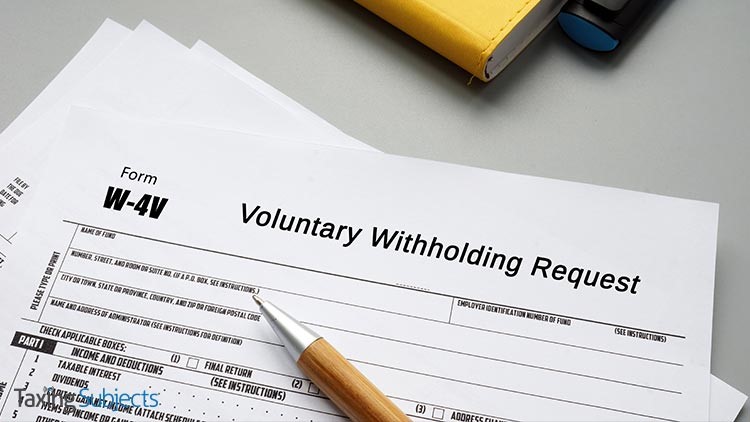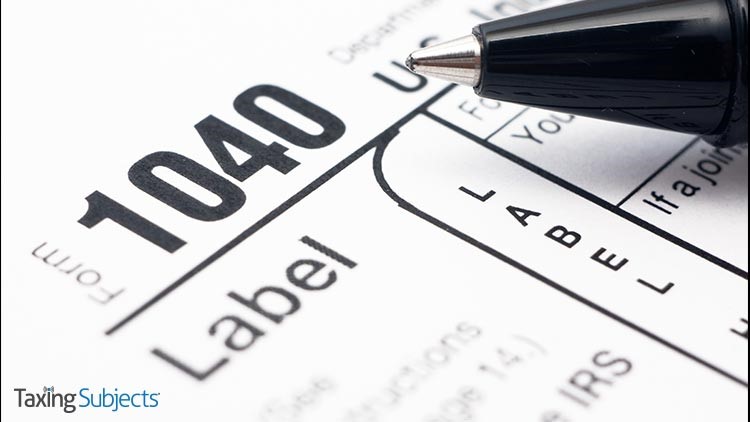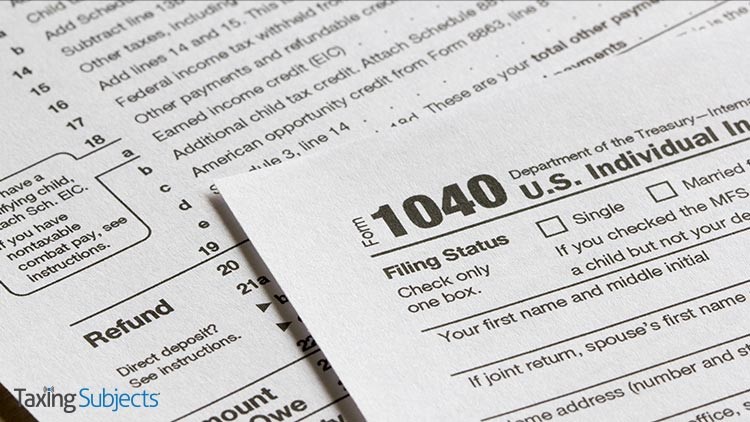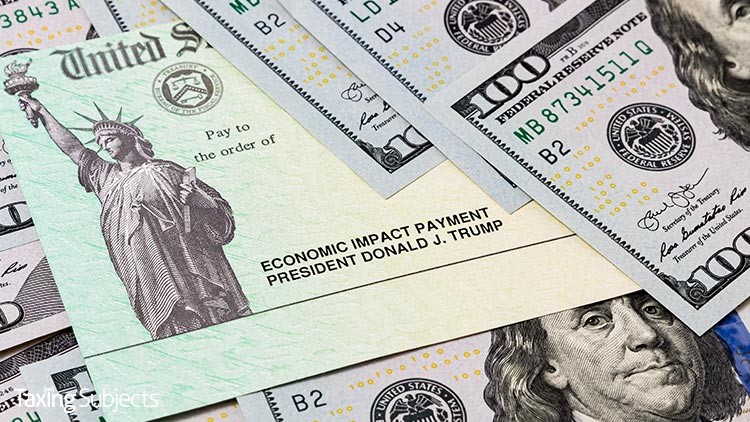by MEA Tax Advisors | Jan 27, 2021 | Tax Tips and News
The Department of Labor reported a staggering 75.9 million initial unemployment insurance benefits claims from January 5, 2020 to January 2, 2021. The number of weekly claims spiked in March, underscoring the devastating financial impact of the COVID-19 pandemic and creating millions of first-time unemployment recipients who might not realize that those benefits are taxable.
Tax professionals are uniquely positioned to help their current and prospective clients avoid a surprise tax bill from their unemployment benefits. After all, losing a job can be a traumatic—often sudden—experience, and learning the ins and outs of unemployment tax liability while frantically trying to make ends meet can be an uphill struggle.
Why are unemployment insurance benefits taxable?
Unemployment insurance benefits are considered taxable income. “By law, unemployment compensation is taxable and must be reported on a 2020 federal income tax return,” the IRS explains. “Taxable benefits include any of the special unemployment compensation authorized under the Coronavirus Aid, Relief, and Economic Security (CARES) Act, enacted this spring.”
While many taxpayers may not realize unemployment payments are taxable, it might also come as a shock that withholding is not automatically taken from those benefits. As with other taxable income, recipients have two options for handling their unemployment tax bill:
- Choosing to withhold tax from each unemployment payment
- Making quarterly estimated tax payments
The IRS says that taxpayers who want to choose withholding need to “fill out Form W-4V, Voluntary Withholding Request, and give it to the agency paying the benefits” instead of the IRS. Further, “if the payor has its own withholding request form, use it instead.” The agency lists the following types of payments as eligible for withholding:
- Benefits paid by a state or the District of Columbia from the Federal Unemployment Trust Fund
- Railroad unemployment compensation benefits
- Disability benefits paid as a substitute for unemployment compensation
- Trade readjustment allowances under the Trade Act of 1974
- Unemployment assistance under the Disaster Relief and Emergency Assistance Act of 1974, and
- Unemployment assistance under the Airline Deregulation Act of 1978 Program
Depending on taxpayers’ individual circumstances, withholding might not be enough to satisfy their tax liability. Quarterly estimated payments can make up the difference, but those who have only ever had taxes withheld from their paychecks may not understand the process. That’s when Form 1040-ES, Publication 505, and a qualified tax professional come in handy.
How do taxpayers determine the amount they should withhold from each unemployment payment?
The IRS recommends checking the IRS Tax Withholding Estimator on IRS.gov to help calculate withholding—especially when unemployment recipients return to work.
Taxpayers who received unemployment in 2020 need to check their mailbox
Whatever agency is actually responsible for paying a taxpayer’s unemployment compensation in 2020 will send Form 1099-G, Certain Government Payments, this month. The IRS says the form “[shows] the amount of unemployment compensation they received during 2020 in Box 1, and any federal income tax withheld in Box 4.”
Where can taxpayers find more information about unemployment benefits?
Taxpayers looking for additional unemployment information not included in the above-listed forms and publications should check the “Unemployment Benefits” section of Publication 525, Taxable and Nontaxable Income.
The good news is that vaccine distribution has already begun. Unfortunately, some estimates predict masks, social distancing, and possible lockdowns could be required until the fall or winter—meaning more taxpayers may need to take advantage of unemployment insurance benefits until we’re on the other side of the pandemic.
Sources: IR-2020-185; Department of Labor, “Seasonally Adjusted US Weekly UI Claims (in thousands),” Jan. 21, 2021
– Story provided by TaxingSubjects.com
by MEA Tax Advisors | Jan 26, 2021 | Tax Tips and News
No matter what strategy taxpayers use to get their income taxes filed, gathering critical documents now can help make this tax season headache-free.
No matter whether taxpayers do their own taxes or employ the services of a tax professional, rounding up necessary records such as W-2s, 1099s, receipts, canceled checks and other documents can mean the difference in supporting claims of income, deductions or credits – or not.
The Internal Revenue Service says taxpayers should gather all their year-end income documents now so they can file a complete and accurate 2020 tax return and avoid a delay in receiving any refund.
Most taxpayers will get some sort of income documents near the end of January. These can include:
- Forms W-2, Wage and Tax Statement
- Form 1099-MISC, Miscellaneous Income
- Form 1099-INT, Interest Income
- Form 1099-NEC, Non-Employee Compensation
- Form 1099-G, Certain Government Payments; like unemployment compensation or state tax refund
- Form 1095-A, Health Insurance Marketplace Statements
Need More Information? Go Online
Taxpayers can access the latest information available about their federal tax account and most recent tax returns by using a secure and convenient tool on the IRS website. It’s the most direct way to get information from last year’s returns.
The IRS says in the coming weeks, individuals with an account on IRS.gov/account will be able to view the amounts of the Economic Impact Payments they received as well as the latest information available about their federal tax account.
Eligible individuals who did not receive the full amounts of both Economic Impact Payments can claim the Recovery Rebate Credit on their 2020 federal tax return. But in order to claim the full amount of the Recovery Rebate Credit, taxpayers will need to know the amount of the Economic Impact Payments they actually received.
For more information visit Secure Access: How to Register for Certain Online Self-Help Tools and learn how to create an account or how to reset the username or password.
Reminder: Unemployment Compensation is Taxable
Millions of Americans got unemployment compensation in 2020 – many of them for the first time. But it’s not free money. Such compensation is indeed taxable and must be included as gross income on their tax returns.
Taxpayers who got unemployment compensation during 2020 should receive a Form 1099-G showing their unemployment income. Taxpayers can elect to have federal taxes withheld from their unemployment benefits or to make estimated tax payments, but many do not make that choice.
In that case, taxes on their benefits will be paid when the 2020 tax return is filed. Therefore, taxpayers who did not have tax withheld from their payments could see a smaller refund than expected or even have a tax bill due.
Those who get a Form 1099-G for unemployment compensation they didn’t receive should contact their state tax agency and ask for a corrected Form 1099-G. The IRS says states shouldn’t issue Forms 1099-Gs to taxpayers they know to be identity theft victims involving unemployment compensation.
Victims of identity theft involving unemployment compensation should not file an identity theft affidavit with the IRS.
More information on taxable unemployment compensation can be found in Tax Topic 418, Unemployment Compensation, or in Publication 525, Taxable and Nontaxable Income, on IRS.gov.
Some Can Use 2019 Income for EiTC
Taxpayers who had income under $56,844 in 2020 may be eligible to claim the Earned Income Tax Credit. The IRS EITC Assistant can help determine who is eligible for the credit.
The EITC can be worth as much as $6,660 for a family with children or up to $538 for taxpayers without a qualifying child.
This tax season there’s a new rule that can help people affected by a job loss or a change in income in 2020. Under the COVID-related Tax Relief Act of 2020, taxpayers can elect to use their 2019 earned income to figure the credit if their 2019 earned income is more than their 2020 earned income.
The same is true for the Additional Child Tax Credit. For details, see the instructions for Form 1040 or Publication 596, Earned Income Credit.
Get Help Online
IRS tax help is available 24 hours a day, seven days a week on the official IRS website, IRS.gov. That’s where people can find answers to their tax questions and resolve tax issues online from the safety of their homes. The Let Us Help You page can help to answer most tax questions while the IRS Services Guide links to other important IRS services.
– Story provided by TaxingSubjects.com
by MEA Tax Advisors | Jan 23, 2021 | Tax Tips and News
The Internal Revenue Service closed out the week by reminding taxpayers that receiving a tax refund by direct deposit is faster and more flexible than traditional paper checks, even for those who do not currently have a bank account. To help convince the remaining 20 percent of taxpayers to make the jump to direct deposit, the IRS emphasizes that it’s easy to set up and—perhaps more importantly—free of charge.
How do I set up direct deposit for my tax refund?
Getting a tax refund issued by direct deposit is straightforward. Taxpayers only need to tell their paid tax return preparer or select the direct-deposit option when using a do-it-yourself tax preparation software, then provide their routing number and account number listed on the checks associated with their bank account. Those who don’t know where to find that information can generally find it on a paper check tied to their bank account, by logging into their bank account online, or in a mobile banking application.
The IRS also lists three other ways to get direct deposit-capable routing and account numbers:
- Online bank accounts
- Mobile banking applications
- Certain prepaid debit cards
The agency notes that taxpayers who don’t have a bank account can use the Federal Deposit Insurance Corporation (FDIC) or, if a veteran, the Veterans Benefits Banking Program (VBBP) to create an account.
Choosing direct deposit gives taxpayers options for their tax refund
Aside from getting a tax refund much faster, the IRS says that choosing direct deposit gives taxpayers flexibility in how they receive their money.
“A taxpayer can split their refund by using tax software or by using Form 8888, Allocation of Refund (including Savings Bond Purchases), if they file a paper return,” the IRS explains. “Some people use split refunds as a convenient option for managing their money, sending some of their refund to an account for immediate use, and some for future savings.”
What’s the easiest way to track a tax refund?
The IRS created the “Where’s My Refund?” online tool to help taxpayers conveniently track the status of their tax return, which provides daily updates about what the agency calls the “three stages” of filing a return:
- Return Received,
- Refund Approved, and
- Refund Sent.
Taxpayers can learn more about direct deposits by watching this IRS YouTube video: https://www.youtube.com/watch?v=2mfpKTx-5nE
Source: IR-2021-19
– Story provided by TaxingSubjects.com
by MEA Tax Advisors | Jan 13, 2021 | Tax Tips and News
The Internal Revenue Service is expanding just who is eligible for an Identity Protection PIN. In fact, the IRS has thrown open the gates and now says any taxpayer who can verify their identity can now get an IP PIN.
The IP PIN is a six-digit code that is known only to the taxpayer and the IRS. It helps to stop identity thieves from filing fraudulent tax returns using a taxpayer’s personally identifiable information.
“This is a way to, in essence, lock your tax account, and the IP PIN serves as the key to opening that account,” said IRS Commissioner Chuck Rettig. “Electronic returns that do not contain the correct IP PIN will be rejected, and paper returns will go through additional scrutiny for fraud.”
The IP PIN program was launched nearly a decade ago by the IRS, aimed at protecting confirmed identity theft victims from ongoing tax-related fraud.
In recent years, the IRS expanded the program to specific states where taxpayers could voluntarily opt-in to the IP PIN program. Now, that voluntary program is going nationwide.
Rules of the Game
The IRS says there are few ground rules to keep in mind about the IP PIN Opt-In program:
- This is a voluntary program.
- You must pass a rigorous identity verification process.
- Spouses and dependents are eligible for an IP PIN if they can verify their identities.
- An IP PIN is valid for a calendar year.
- You must obtain a new IP PIN each filing season.
- The online IP PIN tool is offline between November and mid-January each year.
- Correct IP PINs must be entered on electronic and paper tax returns to avoid rejections and delays.
- Never share your IP PIN with anyone but your trusted tax provider. The IRS will never call, text or email requesting your IP PIN. Beware of scams to steal your IP PIN.
- There currently is no opt-out option but the IRS is working on one for 2022.
Getting an IP PIN
Taxpayers who want an IP PIN for 2021 should go online and visit IRS.gov/IPPIN. Use the Get an IP PIN tool.
The online process requires taxpayers to confirm their identities using the Secure Access authentication process. Taxpayers have to verify their identities if they do not already have an IRS account.
See IRS.gov/SecureAccess for what information taxpayers need to be successful in signing up. There is no need to file Form 14039, Identity Theft Affidavit, to opt into the program.
Once taxpayers have authenticated their identities, their 2021 IP PIN will be revealed to them immediately. Once in the program, this PIN must be used when prompted by electronic tax returns or entered by hand near the signature line on paper tax returns.
All taxpayers are encouraged to first use the online IP PIN tool to obtain their IP PIN. Taxpayers who cannot verify their identities online, though, do have options.
Taxpayers whose adjusted gross income is $72,000 or less can complete Form 15227, Application for an Identity Protection Personal Identification Number, and mail or fax the form to the IRS. An IRS customer service representative will then contact the taxpayer and verify their identity by phone. Taxpayers should have their prior year tax return handy for the verification process.
Taxpayers who use this process will have an IP PIN mailed to them the following tax year. This is for security reasons. Once in the program, the IP PIN will be mailed to these taxpayers each year.
Those who can’t verify their identities online or by phone and are ineligible to file Form 15227 can contact the IRS and make an appointment at a Taxpayer Assistance Center to verify their identities in person. Taxpayers should bring two forms of identification, including one government-issued picture ID.
Taxpayers who can verify their identity through the in-person process will have an IP PIN mailed to them within three weeks. Once in the program, the IP PIN will be mailed to these taxpayers each year.
Identity Theft Victims are Safe
Those taxpayers who are confirmed victims of identity theft – or who have filed an identity theft affidavit because of suspected stolen-identity-refund fraud – will automatically receive an IP PIN by mail once their cases are resolved.
Current tax-related identity theft victims who have been receiving IP PINs by mail will see no change.
For more information on IP PINs, visit IRS.gov.IPPIN. The IRS is also encouraging tax professionals and employers to share information with taxpayers about the availability of an IP PIN. Tax pros and employers can print or email Publication 5367 or share IRS social media and e-poster products.
– Story provided by TaxingSubjects.com
by MEA Tax Advisors | Jan 9, 2021 | Tax Tips and News
The Internal Revenue Service this afternoon announced it was working with the tax and financial industry to redirect Economic Impact Payments that were direct deposited in closed, inactive, or “unfamiliar” bank accounts.
“Some recipients may have had their payment directed to the temporary bank account established when their 2019 tax return was filed,” the IRS explains. “The IRS and tax industry partners are taking immediate steps to redirect stimulus payments to the correct account for those affected. The IRS anticipates many additional taxpayers will receive payments following this effort.”
The trouble seems to stem from two things:
- The short window for issuing payments prior to the beginning of filing season
- Federal law governing how banks handle payments sent to inactive accounts
Since Economic Impact Payments are actually an advance of the Recovery Rebate Credit (RRC) and federal law normally requires financial institutions to return money deposited in closed or inactive accounts, it initially appeared that those affected would need to claim the RRC on a tax year 2020 return to receive the stimulus money. Fortunately, it appears many of these payments will be successfully redirected.
Get My Payment, Mailed EIPs, and the Recovery Rebate Credit
The IRS release also contains additional information about direct deposits, mailed Economic Impact Payments, and the Recovery Rebate Credit:
- Direct deposits. For those who have not yet received direct deposits, they should continue to watch their bank accounts for a deposit in coming days. IRS tax industry partners are taking steps to redirect stimulus payments to the correct taxpayer account for as many people as possible. The IRS emphasizes that the information taxpayers see in the Get My Payment tool, including account numbers and potential deposit dates, may continue to display unfamiliar account numbers as the IRS continues to work through and update this issue. No action is necessary for taxpayers as this work continues; they do not need to call the IRS, their tax provider or their financial institution.
- Mail. Some people will receive their second Economic Impact Payment by mail, either as a paper check or in the form of a debit card. For people in this group, the IRS urges people to carefully watch their mail for either of these during January. Additional information is available on IRS.gov.
- Tax returns. While the IRS continues to closely work with our industry partners to quickly deliver more Economic Impact Payments, the IRS reminds eligible taxpayers who don’t receive a payment – or the full amount– that they can claim the Recovery Rebate Credit when they file their 2020 tax return. Taxpayers in this situation are urged to file electronically with direct deposit to ensure their tax refund – and their stimulus payment – reach them as soon as possible.
Finally, the IRS says that incorrect or unfamiliar information in Get My Payment does not mean your EIP was sent to someone else or stolen. “If you do not recognize the account number, it may be an issue related to how information is displayed in the tool tied to temporary accounts used for refund loans/banking products,” the release reads. “The IRS is working to address this. People do not need to complete Form 14039, Identity Theft Affidavit, or contact the IRS.”
Source: “IRS Statement — Update on Economic Impact Payments”
– Story provided by TaxingSubjects.com





